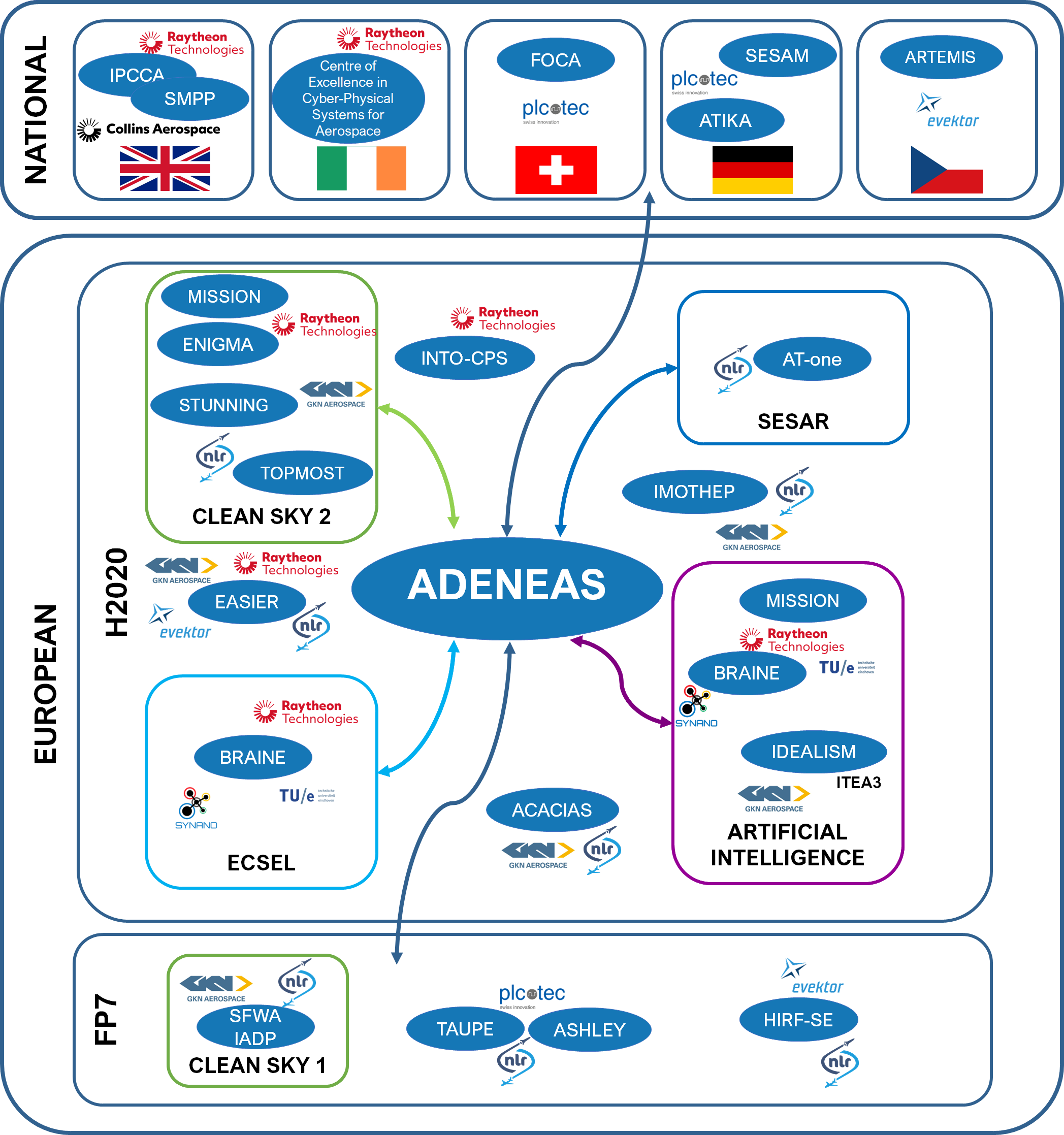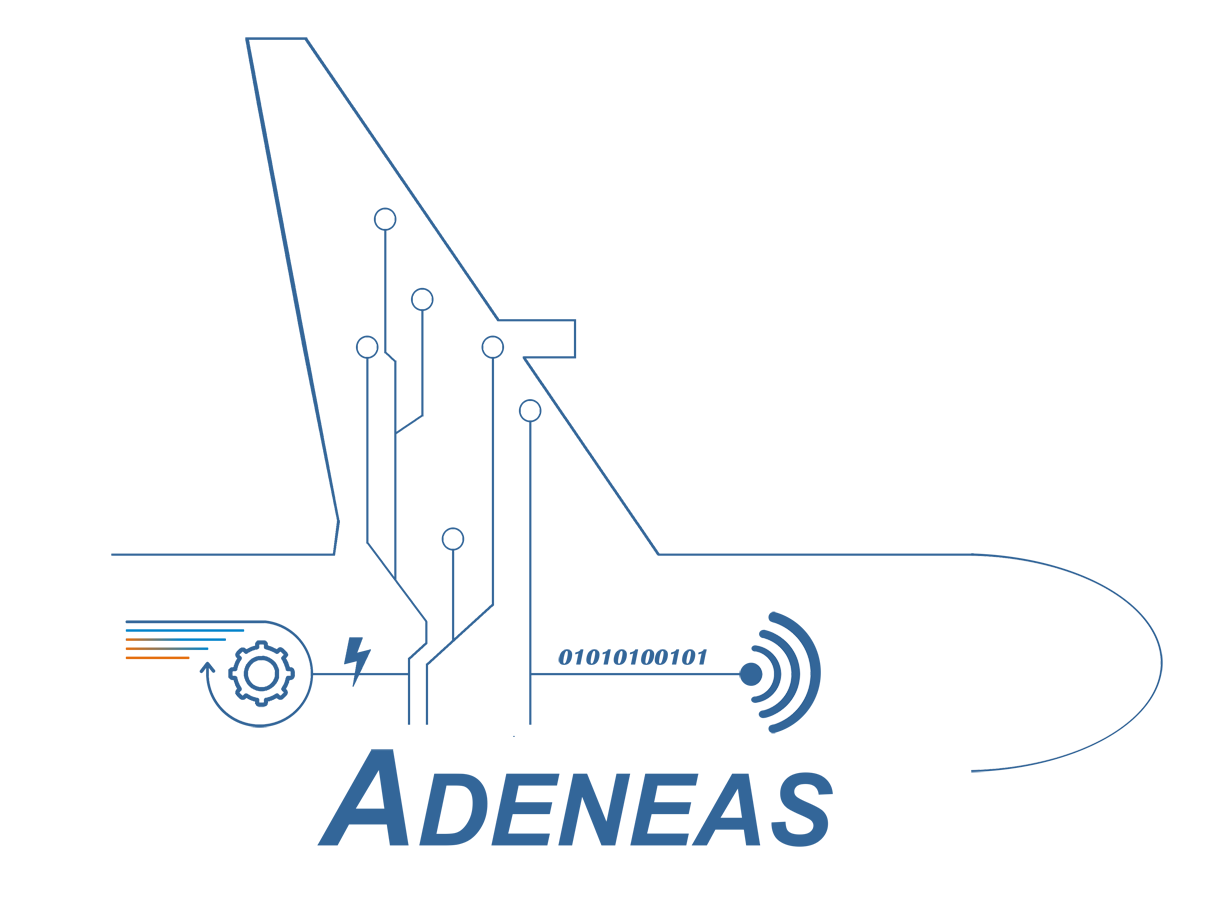National projects
H2020 projects
FP7 projects

The ADENEAS consortium comprises academic partners and key research centres that, throughout the entire project, will disseminate the project results and newly developed solutions to the targeted audiences. Synergies will be established with other communities, notably:
National projects:
- SMPP and IPCCA projects (UK): the consortium will leverage the power converter hardware being developed by ECMS through ATI funded projects titled Integrated Power Conversion and Control Architectures (IPCCA) and Scalable Modular Power Platform (SMPP).
- Centre of Excellence in Cyber-Physical Systems for Aerospace (IE): Collins ART (UTRC-I) has previously participated in a 4-year Irish Government funded research programme to establish a Centre of Excellence in Cyber-Physical Systems for Aerospace at its Cork office. The activities of this research program include work on distributed aircraft power electronic systems (including multiplexing and high-density power electronics development), diagnostics and data analytics, controls, aircraft systems engineering and embedded systems, which is relevant to ADENEAS.
- FOCA (CH): Swiss Federal Office of Civil Aviation (FOCA) research project evaluates the feasibility supporting multiple systems over a single PLC channel in order to provide maximal weight savings especially within the aircraft cabin.
- SESAM (DE): The PLUS technology was successfully used to demonstrate for Cabin systems (SESAM) at Hamburg’s Center of Applied Aeronautical Research (ZAL).
- ATIKA (DE): In ATIKA, architectures for avionic and cabin systems on basis of aircraft type independent modular platform components are currently in development.
- ARTEMIS (CZ): ARTEMIS stands for Analytic Research of Threats in ElectroMagnetically Integrated Systems. The objective is to create and verify new analytical and experimental methods to assess inherent protection of small aircraft and their systems from electromagnetic effects.
H2020 projects:
- CLEAN SKY 2 projects:
- STUNNING & MISSION projects: Fokker Elmo develops novel wiring concepts and structure integrated wiring in STUNNING that are input to ADENEAS for NCC trade-offs. STUNNING is supported by MISSION, where FE defines requirements to an advanced electrical power distribution system that is equipped with PLC by plc-tec.
- ENIGMA: R&D project that will develop and demonstrate (TRL5) a Centralised Smart Supervisory Controller for Enhanced Electrical Energy Management (E2-EM) strategy.
- TOPMOST: With respect to the 2-phase MPL cooling system, ADENEAS will extend the TOPMOST project results by extending the application to cover multiple electronics boxes. Furthermore, the effect of cooling additives researched in TOPMOST for single-phase cooling applications will be evaluated for 2-phase cooling systems.
- ECSEL projects:
- BRAINE: BRAINE is researching energy-efficient and AI-powered edge technology for secure and autonomous data processing. Its challenges are similar to aircraft data networks.
- Other H2020 projects:
- EASIER: Novel conductor techniques developed in EASIER, specifically targeting low emission with regards to High Voltage / High Power applications, are input to ADENEAS. In addition, the interface between UTRC-I’s and FE’s EWIS Optimization Framework developed in EASIER is input to ADENEAS, the latter in which machine learning algorithms will be developed using an architecture modeller. This will enable the exploration of different architecture topologies and the effect to weight and performance..
- INTO-CPS: The INTO-CPS project, in which UTRC-I participated, looked into building a tool chain for Cyber-Physical Systems (CPSs), with a focus on comprehensiveness and reliability.
- IMOTHEP: The IMOTHEP (Investigation and Maturation of Technologies for Hybrid Electric Propulsion) project will focus on hybrid electric propulsion (HEP), including investigations into electrical and power train architecture which findings could be of interest for ADENEAS.
- ACASIAS: NLR will apply ElectroMagnetic (EM) modelling and antenna techniques, partly gained in ACASIAS, re-using existing or extending EM propagation path models.
- Artificial Intelligence projects:
- SESAR joint undertaking projects:
- AT-one: Synergies between ADENEAS and SESAR/AT-one are interesting for the future integration of the on-board electrical power and data network with the ATM network that provides communication between aircraft and ground station, as well as between various ground stations.
FP7 projects:
- CLEAN SKY 1 projects: SFWA IADP addressed compact wiring respecting EMC and thermal constraints to migrate on application of more electrical sensors and actuators, respecting separation distance with power network in the strong space constrained wing area.
- Other FP7 projects:
- TAUPE: Within the EU FP7 TAUPE project, a detailed analysis of weight and complexity savings that can be provided by PLC was performed using the Cabin Lighting System of the Airbus A380 as a reference.
- ASHLEY: In ASHLEY, which focused on avionics systems, PLC applications for multiple electrical aircraft systems in a modular data architecture was demonstrated.
- HIRF-SE: This is relevant for systems integration with respect to electro-magnetic aspects.
